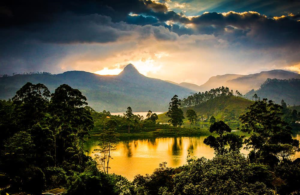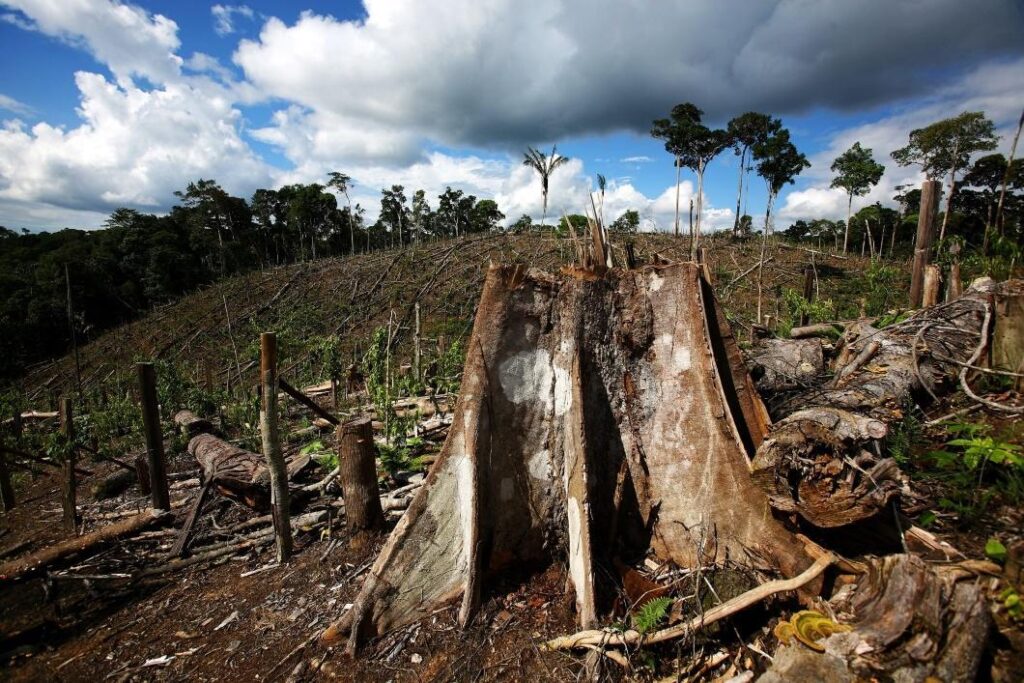Physical Address
23,24,25 & 26, 2nd Floor, Software Technology Park India, Opp: Garware Stadium,MIDC, Chikalthana, Aurangabad, Maharashtra – 431001 India
Physical Address
23,24,25 & 26, 2nd Floor, Software Technology Park India, Opp: Garware Stadium,MIDC, Chikalthana, Aurangabad, Maharashtra – 431001 India

Sri Pada is one of the main sacred places in Sri Lanka. Many pilgrims visit and hike Sri Pada mountain during the Sri Pada season. This visit is not just a visit. Buddhists consider this as an event to show their religiousness. Not only Buddhists but also other religions join in.

But have they ever considered Sri Pada’s environmental importance as a part of religious values?
Sri Pada/ Adam’s Peak
Adam’s Peak, also known as Sri Pada, is a sacred mountain in central Sri Lanka. It belongs to the Samanala mountain range. Sri Pada holds significant cultural and religious value in Sri Lanka and beyond. It is revered by Buddhists, Hindus, Muslims and Christians alike. For Buddhists, it is believed to be the footprint of the Lord Buddha; for Hindus, it is linked to Lord Shiva; Muslims and Christians also have their interpretations. Its cultural value lies in its spiritual significance as a pilgrimage site, fostering harmony among different faiths and attracting visitors seeking spiritual enlightenment.

In Adam’s Peak, climate, geography, and ecology contribute to its unique character and significance.
The climate around Adam’s Peak varies depending on the altitude. Due to the elevation, temperatures can be significantly cooler at the summit. Generally, the region experiences a tropical climate with distinct wet and dry seasons. The wet season typically occurs from May to September, while the dry season spans from December to March.
Adam’s Peak is part of the Central Highlands of Sri Lanka and rises to an elevation of 2,243 meters (7,359 feet). The peak is characterised by its conical shape and is surrounded by lush greenery and dense forests. The terrain leading to the summit is rugged, with steep slopes and rocky paths.
The surrounding area of Adam’s Peak is rich in biodiversity, with various flora and fauna. The lower slopes are covered with tropical rainforests, home to a diverse range of plant species, including orchids, ferns, and endemic tree species. Wildlife in the area includes species like leopards, deer, monkeys, and numerous bird species.
Overall, Adam’s Peak offers religious and cultural significance and, due to its diverse climate, geography, and ecology, serves as a haven for nature enthusiasts.
Biodiversity in Adam’s Peak
Beyond its spiritual importance, Adam’s Peak is also notable for its rich biodiversity. It can be considered one of the richest biodiversity hotspots in Sri Lanka.
The vegetation in Adam’s Peak varies with altitude, creating distinct ecological zones. These zones include lowland rainforests, sub-montane rainforests, and cloud forests.

This zone features dense, evergreen forests with a rich diversity of plants and animals. The tall and continuous canopy creates a humid, shaded environment. This zone is home to numerous endemic species of flora and fauna.
The forest canopy in this area is dense with layers of vegetation that support a rich array of life. Common plant species include large trees like Dipterocarpaceae and various epiphytes and ferns.
This region supports a diverse array of wildlife. Notable among them are several endemic species of mammals, including purple-faced langur, birds, reptiles, and amphibians. The area is especially important for birdwatchers, as it hosts many endemic bird species, such as the Sri Lankan blue magpie, Sri Lanka spurfowl, and jungle fowl.

The montane rainforests are characterised by short trees, often shrouded in mist, and lush undergrowth of mosses, ferns, and orchids. The climate is cooler and wetter than that of the lowlands.
This region supports many endemic species adapted to more relaxed and humid conditions. Notable plants include trees and shrubs such as Rhododendrons, camphor trees, daphniphyllum, and various species of orchids. Endemic birds such as the Sri Lankan white-eye and mammals like the Sri Lankan leopard are found here.

This transitional zone between lowland and montane forests includes elements from both zones. The vegetation is a mix of species found in both lower and higher elevations, creating a unique habitat. The flora consists of species of both other zones and provides a diverse habitat for various species. This zone serves as a corridor for wildlife moving between the lower and higher elevations, supporting a range of bird and mammal species.
Challenges for the Biodiversity in Sri Pada
This critical and rich ecosystem faces several challenges, and biodiversity in this area is at risk for several reasons.

Deforestation can influence human-wildlife conflict, habitat loss, and fragmentation, which are the reasons for the challenge to biodiversity in the area.
Soil erosion can lead to the loss of valuable habitats for plant and animal species and disrupt food chains and ecological relationships within the ecosystem. As soil washes away, nutrients vital for plant growth and ecosystem productivity can be lost, leading to declines in plant populations. This, in turn, can affect herbivores dependent on those plants, causing cascading effects throughout the food web.
Soil erosion can increase surface runoff during rain events, leading to flash floods and further exacerbating erosion. Flood events can destroy vegetation, disrupt animal habitats, wash away topsoil, and exacerbate biodiversity loss in the affected areas. Also, soil erosion can result in the loss of genetic diversity within plant populations. As erosion removes soil, it may also remove seeds and plant propagules, reducing the ability of plants to disperse and colonise new areas. This loss of genetic diversity can make plant populations more vulnerable to environmental stressors and less resilient to changing conditions.

Improper waste disposal, including chemical contaminants, can harm wildlife directly due to accidental ingestion of waste, such as plastic bags, bottles and food wrappers by wildlife, leading to injury, suffocation or death.
Littering and pollution can degrade natural habitats in the Sri Pada region. Plastic waste, in particular, does not biodegrade quickly and can persist in the environment for hundreds of years. Accumulations of litter can alter habitat structure, smother vegetation and disrupt the balance of ecosystems, leading to a decline in biodiversity.
Pollution from litter and runoff can contaminate water sources such as streams, rivers, and ponds. Chemical pollutants, including pesticides, fertilisers, and heavy metals, can accumulate in water bodies, threatening aquatic biodiversity. Polluted water can harm fish, amphibians, and marine invertebrates, disrupting food chains and ecosystem dynamics.
Pollution from litter and runoff can disrupt nutrient cycles in the ecosystem. Excess nutrients from fertilisers or organic waste can lead to eutrophication in water bodies, causing algal blooms and oxygen depletion. These changes can harm aquatic biodiversity and lead to declines in fish and other marine organisms.
Littering can also facilitate the spread of invasive species into the Sri Pada ecosystem. Invasive species may hitchhike on litter, such as seeds attached to clothing or equipment, and colonise new areas, outcompeting native species for resources and disrupting native ecosystems.
The cleaning process is conducted in this area to clean all the garbage collected during the pilgrimage season. However, this process is complex due to the geographical structure of this place. So, littering is becoming more challenging for biodiversity in Sri Pada daily. By April 2024, over 25 tons of garbage had been disposed of in the Sri Pada area for five months.
For example, shifts in temperature and rainfall can lead to changes in vegetation patterns, affecting the availability of food and habitat for native species. Additionally, temperature changes can influence the timing of biological events such as flowering, migration, and breeding, further disrupting ecological interactions.
How does some Sri Pada pilgrimage harm some rare, endangered species?
People with different beliefs on offering things to Sri Pada are widespread. Some locals believe offering rare flowers to the Holy Footprint in Sri Pada is more worthy. So, they try to achieve more valuable, rare and endemic fauna species to get the flowers they offer. The primary example for this is Ran Dothalu (රන් දෝතළු) – Loxococcus rupicola flower, which is endemic to Sri Lanka and in the Endangered category in IUCN Red List according to 2020 records.

There is a story in which Lord Buddha was offered a Ran Dothalu flower by God Sumana Saman when he once visited Sri Pada. People use this story as a motivation to earn more merit by offering it to Sri Pada. Also, these thoughts are influenced by social media.

With these beliefs, these flowers sell at a higher price range, though this plant is considered a protected species. Mainly, The Sri Pada and other mountain regions bear this endemic plant species, but some people tend to destroy even the plant to get its flowers. Only a limited plants of this species remain in the world, and harming these plants and plucking their flowers without letting them reproduce definitely interrupts their distribution and existence. Here is an article on this.
However, these beliefs and stories have an indirect effect on the biodiversity in the Sri Pada ecosystem and other unique biodiversity in the country.
Conservation of the Biodiversity in Sri Pada
Biodiversity conservation in Sri Pada is crucial due to its rich ecological significance. Efforts typically focus on preserving its diverse flora and fauna, protecting habitats, promoting sustainable tourism and raising awareness among visitors about preserving this unique ecosystem. Measures may include establishing protected areas, enforcing regulations, and engaging local communities in conservation initiatives.
More plastics and non-degradable waste are collected in the Sri Pada region during its pilgrimage season annually. Many projects, plans, and volunteer work can be done to clean up this garbage.

However, due to Sri Pada’s geographical structure, it is not easy to clean the area 100%, as it is a difficult process. Also, some waste will aggregate in the environment near the mountain, which humans cannot reach, so collecting it is not very effective.
Accordingly, efforts to reduce plastic usage and manage plastic waste around Sri Pada are essential for preserving the area’s natural beauty and preventing environmental degradation. Initiatives may involve implementing waste management systems, promoting reusable alternatives, conducting clean-up campaigns, and raising awareness among pilgrims and tourists about the importance of responsible plastic usage. Additionally, collaboration with local communities, businesses, and government authorities is crucial to effectively addressing the region’s plastic pollution issue.
Sri Pada’s biodiversity is crucial for several reasons. First, it’s a hotspot of endemic species found nowhere else on Earth. Protecting these unique species helps maintain the balance of ecosystems. Second, Sri Pada’s biodiversity contributes to the region’s ecological resilience, aiding climate regulation, water purification, and soil fertility. Lastly, preserving the biodiversity of Sri Pada is essential for cultural and spiritual reasons, as it’s a revered site for multiple religious groups, highlighting the intersection of nature and culture.
Protecting this valuable area and its biodiversity cannot be done alone or in a short time. This is a long-term goal, and everyone needs support for this. As individuals, we are responsible for protecting this area from harm by human activities and educating others to preserve this. One person’s thoughts could change others as well.
-With inputs from Mihiri Saparamadhu –
Comments are closed.
This page certainly has all of the information and facts I wanted about this subject and didn’t know who to ask.